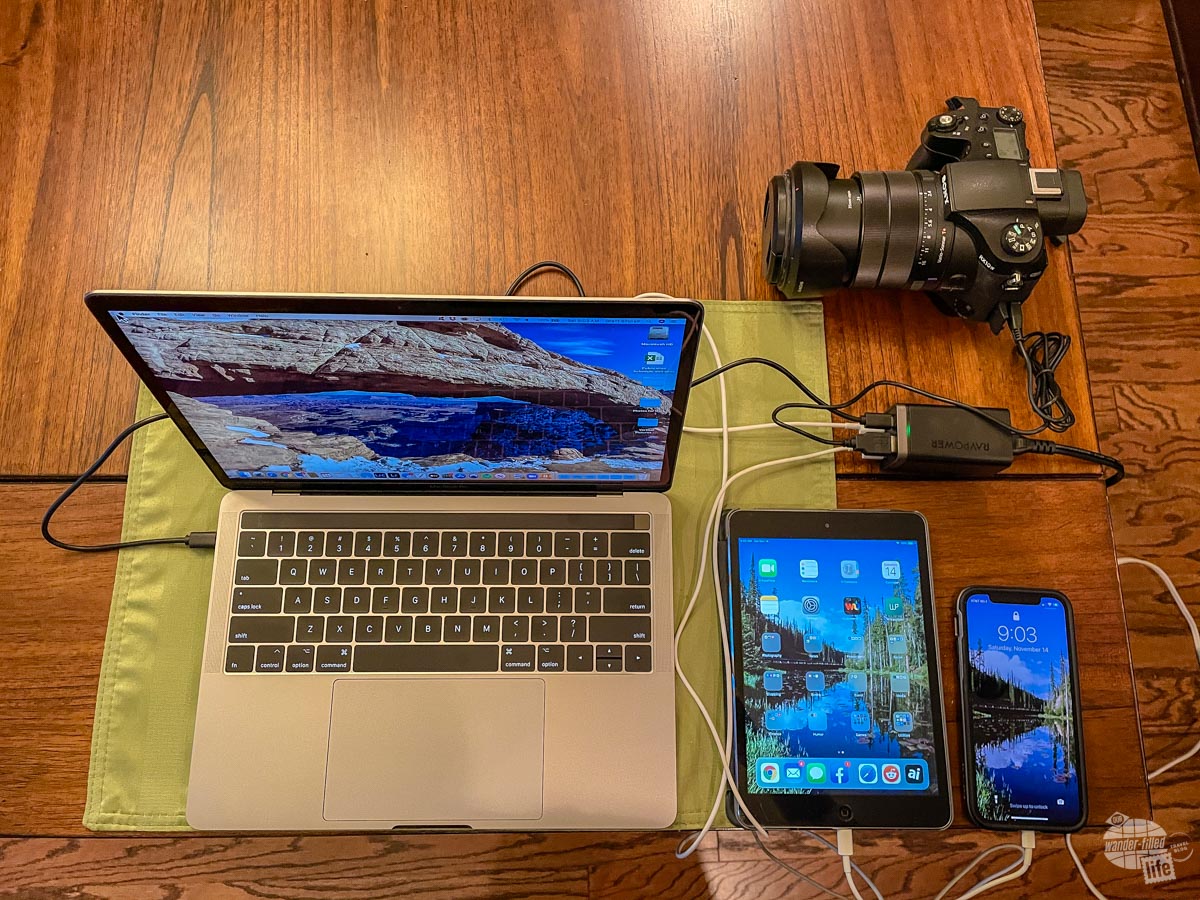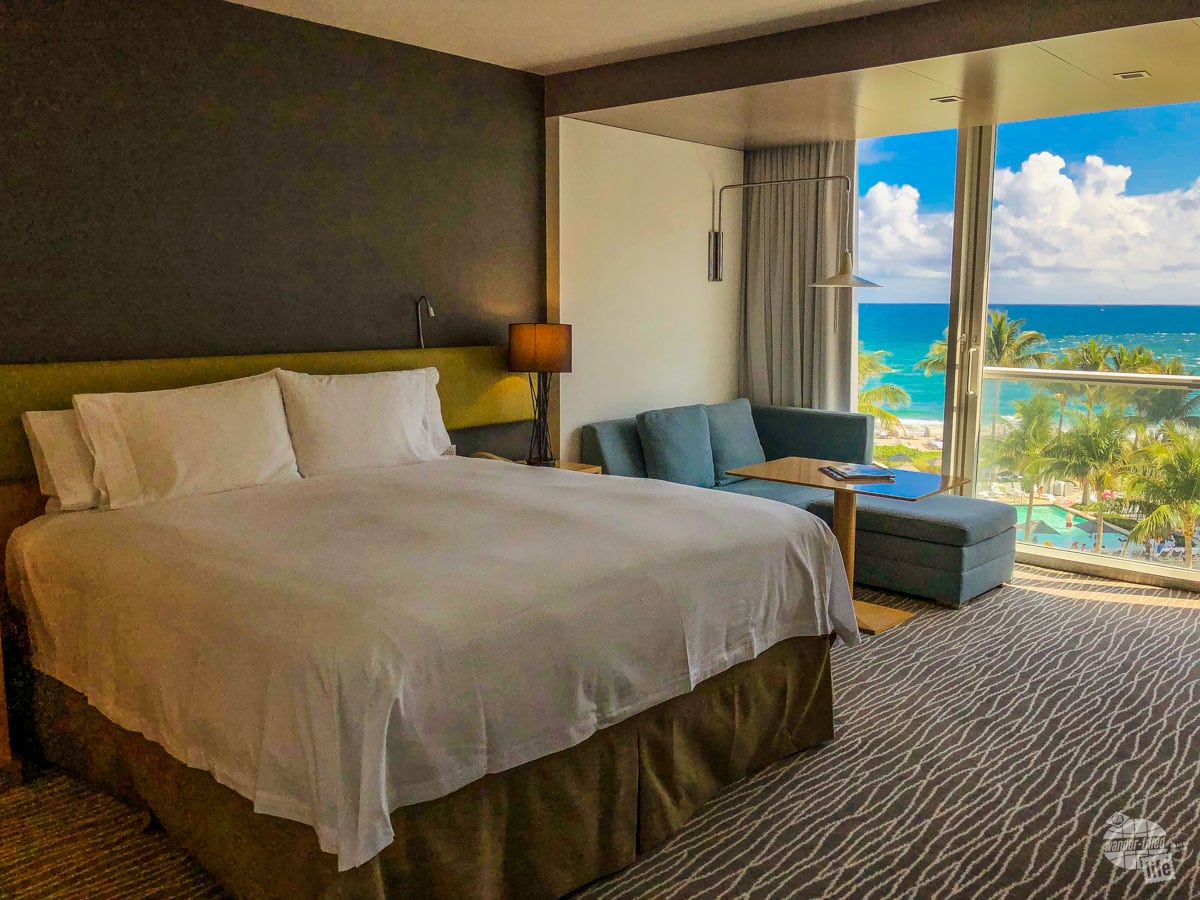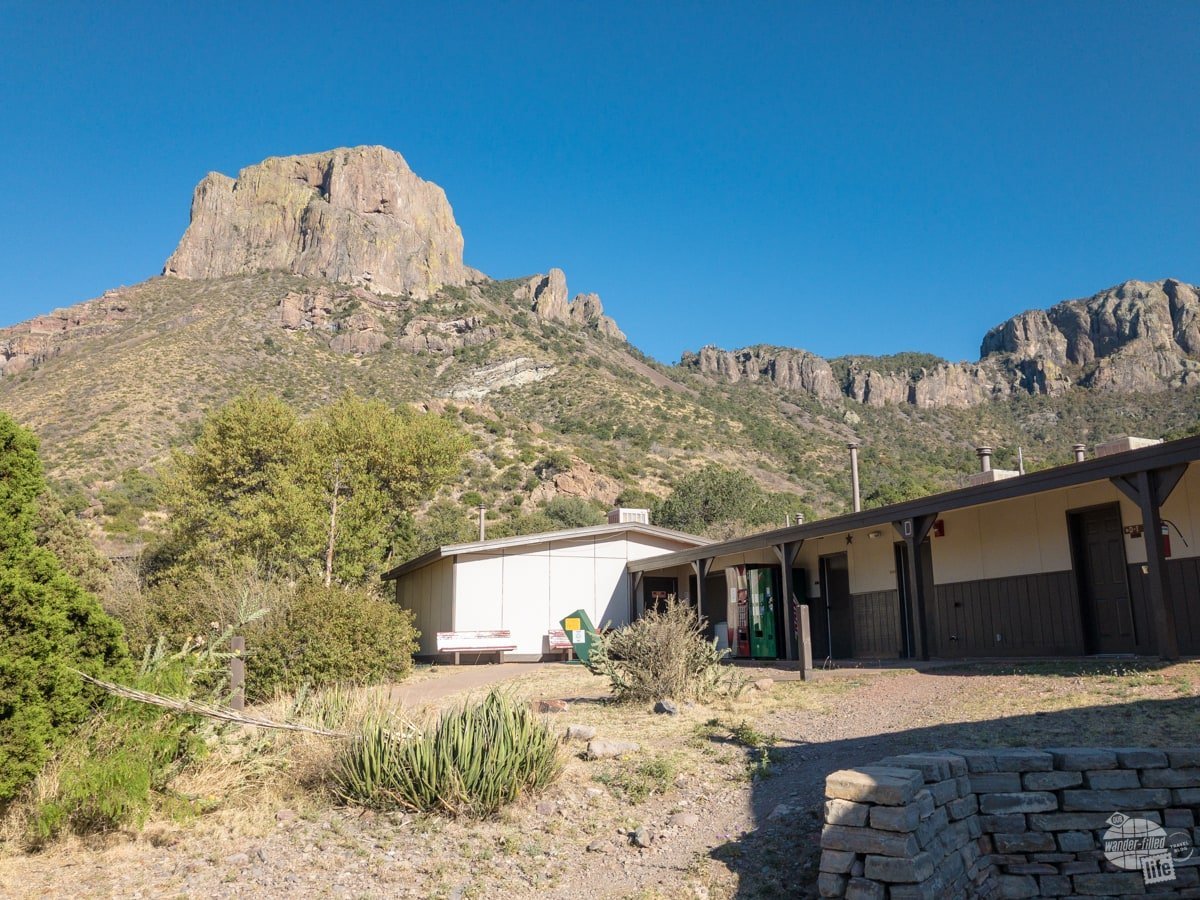Last Updated on February 19, 2024 by Grant
One of the best ways to maximize your travel is by using rewards credit cards. That said, there are A LOT of options when it comes to rewards credit cards. How do you choose the right travel rewards credit card for you?
We have been using various rewards credit cards for more than 10 years. We have had great success in making the programs work for us. Companion tickets, free night stays, points and miles have saved us thousands of dollars. Indeed, our 2020 winter road trip saw us pay cash for only two nights out of a 12-day vacation.
Let’s talk about how you can do this, too.
(Disclaimer: When we link to places where you can buy our stuff or places we stayed, we are using special codes that earn us commissions on the sales at no additional cost to you. Please see our Review Policy for more information.)
Our Number One Rewards Credit Card Recommendation
If you are looking for our top recommendation for a travel rewards credit card, it’s easily the Capital One Venture X card.
Here’s why: you get a ton of benefits for a quite reasonable annual fee. While the fee seems steep at $395, when you factor in the $300 annual travel credit, that fee becomes $95.
For that, you get a ton of premium perks, including primary rental car coverage, airport lounge access, trip cancellation and delay protections, access to an excellent travel portal, no foreign transaction fees and a credit for Global Entry/TSA PreCheck.

In terms of earning points, you get a simple and straightforward two points for every dollar (3.7% effective cash back) which you can use at 15 different airlines and three hotel chains. It also earns 5 points for airfare and 10 points for hotels and rental cars booked through the Capital One Travel Portal
The strength of this card is its simplicity. It gets a good rate on every single purchase. There’s no keeping track of which card is the best for which category. If you are only gonna have one travel rewards credit card, we recommend this one.
Rules for Using Rewards Credit Cards
Let’s start with a couple of ground rules:
- NEVER, EVER carry a balance. If you carry a balance on your credit card, the interest fees will eat up the value of any rewards you get. Pay your bill every month in full and you avoid these additional fees. If you can’t do this, stop reading now and don’t get any credit cards.
- Put every single transaction you can on a credit card. You want to maximize how many points you get. You do this by putting everything on a card… and then paying it off at the end of the month. Be wary, though, of large additional fees for credit card transactions. Anything larger than about 3% is too much versus the value of your points.
- Do not use a debit card. Aside from the lack of rewards, debit cards are just riskier, money-wise. While banks have gotten a lot better at making debit card transactions more fraud-proof, there is nothing better than using a credit card in terms of transaction security. Any fraudulent charges are dealt with by the credit card company BEFORE money comes out of your bank account. Think of a credit card as a firewall for your bank account.
- Keep a budget. We use mint.com to keep track of all of our spending to make sure we spend within our means. This helps us ensure that we can pay off all of our credit card balances every month.
- Always, ALWAYS hit the spend for enrollment offers. Most rewards credit cards will offer you a big bonus for spending a certain amount in the first few months of having the card. Always prioritize that card until the spend is met.
- Don’t pay annual fees on rewards credit cards unless you are getting more than the value of the fee out of the card on a regular basis! Be sure to budget for those annual fees as well. More on this topic below.
- Don’t cancel credit cards unless there is nothing else you can do to downgrade a card to a no-fee option. Closing old accounts will have a negative impact on your credit score. Still, if you’re no longer using the card and can handle a small dip in your credit score, it makes sense to close the account.
As long as you follow these rules, you will start to accumulate points/miles/money that you can use for travel.
Once you have been doing this for a while, be sure to take stock of what rewards you are using versus what your cards are earning. If your travel style has changed or you find you are not using one of the main perks of the card, downgrade it or cancel the card.

Rewards Credit Card Basics
No matter what kind of rewards you want from your credit cards, here are the bare minimums you should be looking for:

- At least 2% cash back or the equivalent. If you are getting less than 2% cash back, you are using the wrong card. The Citi Double Cash card gets that much on every transaction. There is some wiggle room if you are getting another particular value out of the card, like enhanced purchase protections, but accept no less than 1.5%.
- Know the points/miles cash value. Not all points/miles are created equally. We use The Points Guy’s valuations to determine the value of our rewards. Keep these values in mind when choosing a card and redeeming the points/miles. You will find sometimes it is better to pay for a hotel or flight rather than use points. It depends on the redemption value. Better to spend money and earn more points on a cheap flight than burn points on a bad redemption.
- At least two of your rewards credit cards should have no foreign transaction fees. One of those should be a Visa card. There’s no point in having credit cards with you overseas if the rewards you are getting are negated by foreign transaction fees. There’s also no point in taking a card that won’t be accepted like a Discover Card or, often, American Express.
- Do not put all of your eggs in one basket, bank-wise. Make sure that you have a variety of credit cards from multiple banks. If you are traveling and one of your cards from a bank is declined because of a fraud warning, having another card from a different bank will save the day until you can get it resolved. Two cards from the same bank? Both will likely be locked, leaving you holding an unpaid bill at a restaurant, etc.
- Try to find cards to maximize your earnings on various categories of spending, like travel, dining, grocery shopping, etc. Using the right card for a transaction is just as important as having rewards credit cards. While this is a bit complicated and we mix it up from time to time, it works to maximize your earnings.
Which Cards We Use and Our Rewards Strategy
We make a point to maximize our rewards on our credit cards by using specific cards for specific categories of transactions. This allows us to get the most bang for our buck for every transaction.
This is complicated. We know that. We actually have a note on our phones which breaks down what card to use and when.
| Transaction Type | Which Cards We Use |
|---|---|
| Generic Transactions | Capital One Venture X – 3.7% Citi Premier – 1.8% but offers a 2-year extended warranty |
| Gas | Citi Premier – 5.4% Chase Ink Cash – 4% |
| Groceries | Citi Premier – 5.4% |
| Dining | Chase Sapphire Preferred and Freedom Flex – 6% Citi Premier – 5.4% BILT Rewards – 5.4% Hilton Aspire American Express – 4.2% |
| Pharmacy | Chase Freedom Flex – 6% |
| Office Supply Stores | Chase Ink Cash – 10% |
| Internet, Phone, Cable (Including Streaming) | Chase Ink Cash – 10% |
| Rent | BILT Rewards – 1.8% |
| All cash back equivalencies are calculated via The Points Guy |
When it comes to travel purchases, which card is best to use really comes down to how we are making the purchase and what we are purchasing. You will also want to pay attention to whether the card has travel protections. For example, the Citi Premier has a good cash back rate but does not have travel protections like travel delay or lost luggage coverage.
For example, even if you get a higher rate of return from the Citi Premier, it is not worth using that card over the Chase Sapphire Preferred or the Capital One Venture X, both of which have primary rental car coverage. That means when you get to the rental car counter, you decline all of the optional insurance coverages because the credit card covers you. That benefit is worth far more than the slightly lesser reward rate.
| Travel Transactions | Which Cards We Use |
|---|---|
| Airfare Booked Directly with the Airlines | Hilton Aspire American Express – 4.2% Chase Sapphire Preferred – 4% BILT Rewards – 3.6% Citi Premier Card – 5.4% but lacks travel protections |
| Hotels Other Than Hilton Booked Directly | Citi Premier Card – 5.4% (Has an annual benefit of $100 off a $500 stay) Chase Sapphire Preferred – 4% (Has a $50 annual hotel credit) BILT Rewards – 3.6% |
| Rental Cars Booked Directly | Chase Sapphire Preferred – 4% Capital One Venture X – 3.7% BILT Rewards – 3.6% (All three of the above cards provide primary rental car coverage) Citi Premier – 5.4% but no rental protection |
| Booking Through Travel Portals | Chase Sapphire Preferred – 10% on everything Capital One Venture X – 9.25% on airfare – 18.5% on hotels and car rentals |
| All Other Travel Expenses (Tolls, Parking, Campgrounds, Cruises, etc.) | Chase Sapphire Preferred – 4% Capital One Venture X – 3.7% |
| Hilton Hotels | Hilton Aspire American Express – 20.4% when combined with the Diamond bonus |
| Travel Expenses Outside the US (No Foreign Transaction Fees) | Chase Sapphire Preferred Capital One Venture X Citi Premier Hilton Aspire American Express BILT Rewards |
| All cash back equivalencies are calculated via The Points Guy |
If you are looking at different cards (and you should if your needs vary!), be sure to check The Points Guy valuations for your chosen card so you can compare apples to apples when you are trying to decide which card you should use for what.
Again, if maximizing credit card categories is not something you are interested in, get the Capital One Venture X card. The reward rate of 3.7% is excellent and you don’t have to think about which card to pull out of your wallet.
Rewards Credit Card Types
There are three kinds of rewards credit cards: straight cash back, generic rewards points and branded rewards points. All three have pros and cons in terms of value to you as a traveler and having a mix of the cards is a good idea!
Cash Back Cards
Straight cash back cards are pretty simple. They offer a flat percentage as cash back for your purchases. With this, you don’t have to worry about point valuations or where you can redeem them. You often receive the cash back as a statement credit, though some cards may offer direct deposit or check.
If you want something simple with no frills, the Citi Double Cash card is for you. It is a straight 2% cash back on every purchase and there is no annual fee. It is simple and if there was one card I would recommend for someone who wants simple cash back, this is it.
| Cash Back Cards We Use | Rewards Rate | Pros and Cons |
| Citi Double Cash | 2% on All Transactions | Pros: Simple reward structure. Points can be transferred to a premium ThankYou Rewards card for expanded redemptions. Cons: Has no purchase or travel protections. Mastercard cannot be used at Costco. Charges a Foreign Transaction Fee. |
| Apple Card | 3% on Apple and other select merchant transactions 2% on all Apple Pay transactions 1% on transactions using the card in person | Pros: Good reward rate on Apple Pay transactions, Excellent user interface in Wallet app, Available high-yield savings account for cash back rewards Cons: If you don’t live in an area where Apple Pay is used all the time, this card has a lot less value. Mastercard can’t be used at Costco. No purchase protections. |
| Amazon Prime Visa | 5% on Amazon, Amazon Fresh, Whole Foods, Chase Travel 2% on Gas Stations, Restaurants, Local Transit and Commuting 1% on everything else | Pros: Great reward value for Amazon and Whole Food shoppers. Good reward value for other transactions. Is a Visa card, so can be used at Costco. Several purchase and travel protections. No Foreign Transaction Fees Cons: Requires Amazon Prime membership and you only really get the full value of this card if you shop a lot at Amazon. |
That said, if you shop on Amazon, take a serious look at the Amazon Prime Visa. This card offers good rewards rates, ample purchase and travel protections and no Foreign Transaction Fees, making this a great card, especially if you shop at Whole Foods as well.
There are other cards that offer higher rewards for specific or rotating categories of spending. We have the Chase Freedom Flex card, which offers 5% cash back for categories that rotate every quarter. While this sounds complicated (and it is), where this card shines is its synergy with other Chase cards. More on that below.

I also have an Apple Card, which gives 3% back on Apple purchases, 2% back on Apple Pay transactions, and 1% back on all other transactions. There are no Foreign Transaction Fees but there also are no purchase or travel protections. Where the Apple Card shines is areas where Apple Pay is widely accepted and the introduction of the new high-yield savings account.
Once you set it up, your cash back is automatically deposited in a high-yield savings account (at time of writing 4.15%!), meaning your cash back rewards will earn interest! That is a bit of a game-changer!
Pros of cash back cards: simple and cash is easy to spend. Many have no annual fee.
Cons of cash back cards: sign up bonuses are minimal if there are any at all. You can, generally, get better value out of using points for rewards than just getting cash for a statement credit.
Branded Rewards Cards
Branded Rewards Points Credit Cards used to be the bread and butter of any credit card strategy. You would get a credit card for your favorite airline and your favorite hotel and save up rewards points until you took a trip. Oftentimes, the cards provide status within the associated rewards programs or provide other benefits like free checked bags or complimentary breakfast at the hotel.
There’s still some value in doing that but there is not nearly as much flexibility, especially on airlines. Here’s what we do and do not recommend:
Airline-Branded Rewards Credit Cards
For years, we had a Delta SkyMiles American Express. We used it regularly and made a point to use the companion pass with it as much as we could. That said, we realized quickly the restrictions Delta had placed on how to use the pass were so prohibitive, there were times we could just buy two sale tickets for less than what a ticket eligible to use a companion pass would cost. Plus, we bought an RV and decided we were not going to be flying as much.

If you fly regularly for work, having a branded airline credit card is worth it, especially if you get status from the card. For the business traveler, this makes complete sense. For the regular traveler, we cannot recommend any airline-branded credit cards except Southwest.
The only reason why we recommend Southwest is the amazing Companion Pass. That pass allows you to take your +1 with you on any Southwest flight for a year. That’s an amazing deal!

I (Grant) completed a promotion to earn a temporary Companion Pass when I visited Waco in October 2022. We took trips to Chicago to explore Pullman National Historical Park and New Orleans for a Western Caribbean cruise to take advantage of the companion pass.
Read more about visiting Waco, TX here.
We do not presently have an airline-branded rewards credit card. The Southwest Rapid Rewards cards are a goal for the future when we have time to visit major cities like New York City and Boston.
Pros of airline-branded rewards credit cards: Perks for frequent fliers like priority boarding or free checked bags.
Cons of airline-branded rewards credit cards: Can be more limiting in terms of using travel rewards than generic points. Many have annual fees that are not made up when not flying often.
Hotel-Branded Rewards Credit Cards
Hotels are a different story, at least for us. We chose Hilton Hotels many years ago and have maintained at least gold status with that program for most of that time. We have had multiple Hilton-branded rewards credit cards and have gotten great value out of those cards.
One of the main reasons we like Hilton is we can find Hilton properties pretty much anywhere we want to travel. We can often find several hotels at a variety of price points. Gold status provides complimentary breakfast (or a food/beverage credit) at most hotels, which is a significant value for us ($20/day or more).

We presently have the Hilton Aspire American Express, which is the Hilton premium card. It gets 14 points on the dollar at Hilton properties (8.4% cash back equivalent). We also get 7 points on the dollar for flights, rental cars and restaurants (4.2% cash back equivalent) and 3 points on everything else (1.8% cash back equivalent). We use this card primarily for Hilton purchases but American Express does have excellent purchase protections, so we do use it for things we want an extended warranty on.
Additionally, the card gets us Diamond status with Hilton. That has a lot of value itself: 12% cash back equivalent in points on every stay. Plus, we get a free night, a $250 resort credit and airline lounge access. In short, it is very easy for us to get the value out of the $450 annual fee.

Getting the Most Out of a Hilton Free Night Certificate
That said, if you don’t travel as much as we do, you might get more value out of the other two Hilton-branded cards. While the rewards aren’t as great, the fees are significantly less. In particular, the Hilton Surpass American Express is an outstanding card that includes Gold status and the opportunity to earn a free night at only $95 per year. American Express also offers a no annual fee Hilton Honors Card.
Pros of hotel-branded rewards credit cards: Hotel status is often a perk and is often quite valuable. Many hotel chains have several cards at various price points.
Cons of hotel-branded rewards credit cards: US hotel chains can be limited overseas and in vacation hot spots, like Hawaii.
Generic Rewards Credit Cards
There are four major generic credit card rewards programs: American Express Membership Rewards, Capital One Rewards, Chase Ultimate Rewards and Citi ThankYou Points. Recently, Wells Fargo stepped into the mix with BILT Rewards, which is aimed at renters.
When you use one of the cards keyed into these programs, you get a generic point that can be used for travel through the company’s online portal. Some of the cards also allow you to use the points as statement credits, though this is not generally a good use of the rewards.
You can also transfer your generic points to various travel partners. American Express has 19 airline partners and three hotel chains. Capital One has 15 airline partners and three hotel chains. Chase has 10 airline partners and three hotel chains and Citi has 14 airline partners.

While there is some overlap on which programs can transfer to which airlines, most fall in terms of which banks have the branded credit cards for those particular airlines or hotels.
As you can see, you have A LOT more flexibility in using generic rewards credit cards. If you get really good at working the system, you can transfer points to one partner. Then you turn around and book a flight on one of its partners for even more value but that takes work. It also generally requires an annual fee on the credit card, typically $95 or more.

We presently have three cards that earn Chase Ultimate Rewards Points, two cards that earn Citi ThankYou Points and one card that earns Capital One Venture Points. We are considering adding an American Express Membership Rewards card in the future.
Chase Ultimate Rewards
Our Chase cards get more use than any other brand. Between the three cards we have, we earn 5 points on the dollar (10% cash back equivalent) on office supplies, internet, phone and cable (which includes streaming services) plus a rotating category. We earn 3 points on the dollar (6% cash back) on dining and pharmacy purchases. We also earn 2 points on the dollar (4% cash back) on generic travel, like tolls and campgrounds.
For this we have one card with an annual fee ($95): the Chase Sapphire Preferred. Aside from its solid rewards rates, it also has excellent travel protections including primary rental car coverage, trip delay, cancellation, baggage delay and lost luggage reimbursement.

We actually downgraded from the Chase Sapphire Reserve card because we felt the annual fee, which jumped from $450 to $550, did not provide the value we were looking for. While we are losing out on 1 point per dollar on travel purchases and the $300 annual travel credit, we are getting the same rate for dining, which we do a lot more often. We feel the Capital One Venture X Rewards Card provides a much better value. More on that excellent card below.
The other two cards, the Chase Ink Business Cash card and Freedom Flex card, both earn Ultimate Rewards points when combined with Chase Sapphire Preferred (as well as the Chase Sapphire Reserve and the Chase Ink Business Preferred). Those cards just have to be paired with one of those three Chase premium cards to earn Ultimate Rewards Points but they themselves do not have annual fees.
The Chase cards, particularly, the Sapphire Preferred card, have excellent travel and purchase protections, including primary car rental insurance.
Read more about the Chase Ultimate Rewards Trifecta
Citi ThankYou Points
Bonnie has the Citi Premier Card, which has a $95 annual fee, and it gets 3 ThankYou points on the dollar (5.4% cash back equivalent) for air travel, hotels, groceries, restaurants and gas (which Chase does not give credit for). With such a variety of common categories which have a great return rate, this card is a solid choice. Add in a $100 annual hotel credit on a booking of $500 or more, and you can easily make up for the annual fee.
This card also has good purchase protections and no foreign transaction fees. That said, it lacks a lot of other travel protections, like trip cancellation, delay, lost luggage and car rental protections.

The Citi Double Cash card also recently started offering ThankYou points at a straight rate of 2 points on the dollar. That translates to 3.6% cash back equivalent on all purchases, which is great, but it does have foreign transaction fees and Citi recently got rid of all of its purchase protections. One caveat about transferring points from the Double Cash to the Premier card: the points will expire after 90 days.
We have made great use of Citi ThankYou points for booking rental cars through the Citi travel portal, including on our recent trip to Hawaii.
Read more about our recent trip to Hawaii.
Capital One Venture Points
Last year when it launched, we got the Capital One Venture X Rewards card. It has quickly become our favorite travel rewards card and our number-one recommendation for anyone looking to get into travel rewards credit cards.
What makes this card so compelling is its relatively low annual fee ($395) combined with a $300/year credit on travel through the Capital One Travel portal (which is great, by the way), Priority Pass lounge access, and $100 for Global Entry every five years. Oh, and you get 2 points on the dollar (3.7% cash back) on EVERY purchase. This makes the annual fee effectively $95/year with a ton of benefits.

You also get some pretty outstanding travel and purchase protections, including trip cancellation, interruption, delay, lost luggage and primary rental car coverage. Oh yeah, there are no foreign transaction fees either!
BILT Rewards
This is the newcomer to the travel rewards game. This card is designed for those who pay rent via credit card or electronic withdrawal. The card allows you to earn 1 point per dollar (1.8% cash back) on rent transactions. If your landlord does not accept credit card payments or charges a fee, you can still pay using the card through a checking and routing number provided by BILT.
We got this card after selling our condo and moving into an apartment. We are excited to get something back from our rent payments and the points have good value. If you are just starting out in the travel rewards game, this is a good choice.
The card also earns 3 points on dining (5.4% cash back), 2 points per dollar on travel (3.6% cash back) and 1 point (1.8% cash back) on everything else. In addition, on the first day of the month, those bonuses are doubled! That makes going out to dinner on the first of the month worth a ridiculous 10.8% effective cash back!
While you have some flexibility in terms of point redemptions, the best redemptions are in the travel portal (1.25 cents per point), saving for the down payment on a home (1.5 cents per point) and transferring to one of BILT’s travel partners. BILT has 12 airline partners and 2 hotel partners and points transfer at a 1:1 ratio. This is the only card you can earn generic points which transfer to American Airlines.
While there is no annual fee, there is a catch: you have to make at least five transactions with the card that month to get the rewards points. We get around this by putting a few monthly bills which do not fit in any other rewards category and going out for dinner on the first of the month! This card does have some good travel and purchase protections, making it a solid card for anyone who pays rent.
Pros of generic points rewards credit cards: Generic points cards offer a lot of flexibility and typically have good earnings rates on specific categories.
Cons of generic points rewards credit cards: Most have some sort of annual fee. Keeping track of which card to use when can be difficult.
Travel Portals
Recently, Chase and Capital One have made a point to offer increased rewards rates for booking travel through their branded travel portals.
The Capital One Venture X Rewards Card gets an excellent 10 points on the dollar (18.5% cash back) on hotels and rental cars, as well as 5 points on the dollar (9.25% cash back) on airfare.
We have found the Capital One travel portal to be quite good. We particularly like the flight tracking feature which will let you know when it’s the best time to book a flight. The only drawback is you don’t have access to Southwest Airlines through the portal.

The Chase Sapphire Preferred gets 5 points on the dollar (10% cash back) on all bookings through its travel portal. This inches out the Capital One Venture X on airfare through its travel portal, but the Venture X card easily beats out the Chase Sapphire Preferred on hotels and rental cars.
The Chase Ultimate Rewards travel portal is basically Expedia, which has its plusses and minuses. We used this portal extensively to book places to stay in Hawaii for both our aborted Summer 2020 trip and again on our Winter 2021 trip to Hawaii. That said, we had some difficulties dealing with cancellations after Hawaii shut down for COVID. Expedia customer service hours line up well for US travelers but not so well for anything outside of continental US time zones.
OK, Great But Which Card is Right for Me?
First and foremost: are you interested in travel?
If you are not interested in travel, go for a cash back card. Out of the three we have, all have their pros and cons. I like the purchase protections of the Amazon Prime Visa card but I also really like the idea of earning interest on my rewards with the Apple Card.
If you are interested in travel, skip the cash back cards. While getting straight cash back is great and I have a few cards like that, it does not translate into saving serious money on a trip. Plus, getting things for free tends to feel better than just saving money even if the “discount” is the same.
You just won’t get the travel value out of a cash back card. In this case, I highly recommend getting a generic points rewards credit card.
The Capital One Venture X Rewards Card is easily my recommendation to anyone looking to get just one travel rewards credit card. For what is effectively a $95 annual fee ($395 annual fee minus the $300 travel credit), it offers a premium card experience with an excellent reward rate on every purchase. If you only get one card, this is it.

Second question: do you travel more than two weeks per year for either work or pleasure? If the answer is yes, consider getting a hotel-branded card. Look for one that offers status with a hotel chain, even if it has an annual fee. If less than two weeks, look at a free option.
Third question: do you fly at least once a month on the same airline? If so, look at getting a branded airline rewards credit card. For most folks who don’t fly that often, there’s not enough value in an airline card with an annual fee to make it worth it.
Final Thoughts on Choosing a Rewards Credit Card
If you are looking to get into travel rewards credit cards, now is a good time to take stock of what credit cards you have. This will help you decide what you want out of these tools that live in your wallet.
We are firm believers in making your cards work for you. Choosing the right card can make all the difference in how you are able to travel and what kind of trips you can take.

Indeed, using credit cards wisely has saved us tens of thousands of dollars in travel expenses over the past decade. Even if you decide to get the most basic credit card to begin earning points, you can follow in our footsteps.
Travel Resources
What do you use to find a flight?
We use Skyscanner to find deals on flights. Skyscanner has a great interface and compares tons of airlines for the best pricing and routing. That said, it does not always have every airline and some airlines will have better deals on their website. Still, Skyscanner is a great place to start.
Click here to search for a flight.
What do you use to find a hotel?
We typically stay at Hilton properties, so we use the Hilton website. You can find good Hilton Honors discounts or AAA discounts for a hotel there. We make great use of our free night certificates from our Hilton Honors American Express.
Click here to book a Hilton property.
If there are no Hilton properties available, we use TripAdvisor to read reviews and book the hotel. We find we can get the best price that way.
Click here to search for a hotel.
We recently partnered with Stay22 to add interactive maps to each of our destination posts. This will allow you to see a plethora of hotels and vacation rentals all in one responsive map of the area.
What if I need more space than I can get at a hotel?
We use Vrbo for the times when we have rented a cabin for a weekend getaway, like this cabin in Townsend, TN, or needed to rent a house for a large family vacation. We had a great experience with them in terms of refunding deposits when COVID hit and will continue to use them.
Click here to search for a vacation rental.
Who do you use for rental cars?
As a general rule, we book with Hertz for rental cars. We have had nothing but good experiences with them. Plus, we really like unlimited mileage and not worrying about crossing state lines. We have even rented from Hertz overseas in both Slovenia and Croatia.
Click here to book a rental car.
How about booking a cruise?
We have found some amazing prices for booking a cruise through Cruise Direct. We have saved a lot of money on our cruises compared to what we found elsewhere, making a last-minute Bahamas cruise even cheaper.
Click here to book a cruise.
What if I want to rent an RV?
We highly recommend Outdoorsy for RV rentals. We rented a camper van for a week to visit Rocky Mountain National Park for the elk rut and Custer State Park for the Buffalo Round-Up and had a blast. The program was easy to use and we really enjoyed the freedom of having a camper van for that trip.
Click here to rent an RV.
What do you use for booking tours?
We don’t often book tours. Typically, we like to do stuff on our own. That said, there are some experiences you can’t have any other way. So, when we do want to book a tour, we always check Viator first.
Click here to book a tour.
Do you use anything to get discounts on the road?
We make extensive use of both Good Sam and AAA on the road. Good Sam is normally regarded as a discount card for RVers at campgrounds and Camping World but anyone can use the 5 cents off a gallon at the pump at both Pilot and Flying J.
Click here to get a Good Sam membership.
We have had AAA as long as we have been married and it has more than paid for itself in discounts at hotels, aside from the peace of mind of having roadside assistance. Add in paper maps and the ability to get an international driver’s license and it is more than worth it for any traveler out there.
Click here to get a AAA membership.




Well written!
Thanks Dale!